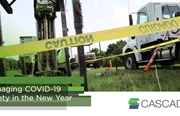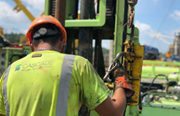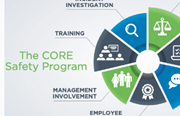- Cascade
June is National Safety Month. We’d like to kick it off by sharing some valuable tips on designing an effective safety campaign. According to the Bureau of Labor Statistics, more injuries occur during the summer months than at other times of the year, and this can be attributed to a number of things. For one, the summer work season is filled with distractions as holidays and employee vacation time disrupt the regular work routine. The warm weather, increase in seasonal or temporary labor, and more daylight hours also contribute to workplace distractions. All of this makes summer the perfect time to think about raising safety awareness in your organization.
One of the most effective methods to increase safety vigilance is through an effective safety campaign. There are 3 important steps in executing a successful campaign:
- Choose a Relevant Focus
- Establish Clear Parameters
- Communicate
Choose a Relevant Focus
Choose a campaign focus that is relevant to what’s going on in your organization. The best place to start is a deep dive into your safety data. Make sure to evaluate both leading and lagging indicators from multiple sources.
Leading indicators focus on incident prevention; they are predictive in nature. Common leading indicators include training, inspection results, employee observations, near-misses, and employee engagement.
In contrast, lagging indicators are reflective; they tell you what has already happened. Typical lagging indicators include number of incidents, days away from work, and injury rates.
Use the data to identify trends or issues that would benefit from an awareness campaign. These may include:
- Increase in reportable incidents involving certain actions or during a certain timeframe
- Increase in reported observations around a specific issue
- Number of reports of non-compliance with a particular safety policy
Both leading and lagging indicators are a great way to understand the current state of your organization’s safety program and thus helps you to create a relevant focus for improving them.
Establish Clear Parameters
Once you’ve decided on the focus of your safety campaign, the next step is establishing clear parameters for the campaign. That means clearly defining expectations for the campaign- everything from the goal, the time frame, participation, and the incentives. It is critical to specify the roles of all campaign stakeholders from the senior leadership to the field employees; everyone must be involved.
Finally, define the desired outcome of the campaign from both quantitative and qualitative perspectives. Outcomes may include participation rates, reduction in incident rates, number of reported observations, and increase in compliance rates.
Communicate
Now that you’ve narrowed your campaign focus and have clearly defined the parameters, it’s time to get the word out. A multi-channel communication strategy ensures your message hits a broad audience. This is essential in diverse organizations like Cascade that include office and field personnel. The communication efforts should continue all the way through from launch to completion.
A successful communication strategy includes visually-appealing printed material posted in common work areas, written communication such as email, and verbal communication such as small group meetings or even a companywide web-based presentation. Furthermore, a little creativity goes a long way in sparking employee engagement: photo or video contests often yield a wealth of material for use in current and future campaigns.
Campaign in Action
Cascade routinely uses safety campaigns to drive awareness and engage employees to promote safe work behaviors. Like many companies, Cascade has experienced an increase in safety incidents and reported observations in the summer months. Through evaluation of both leading and lagging indicators, our EHS team recognized a direct correlation between the number of injuries and occurrences of non-compliance with safety procedures around warm weather field work. In an effort to increase compliance, we constructed a campaign focused on job-site compliance.
Field crews were evaluated and scored based on their compliance with safety policies and procedures on the job site, including policies related to span style="font-weight: 400;">the prevention of heat-related illnesses. Crews that scored over a desired percentage point were recognized publicly afforded an opportunity to earn additional incentives, not as a reward for doing what should be expected, but rather as recognition for a consistent level of excellence.

The campaign’s success was proven by a significant improvement over historical summer safety statistics including zero heat-related illnesses and a 50% reduction in recordable inquiries compared to the same summer timeframe of previous years.
Categories
- Site Remediation
- Drilling
- Careers
- Cascade Chemistries
- Safety
- Site Characterization
- Thermal
- Rotary
- Sustainability
- In Situ Stabilizaton
- High Resolution Site Characterization
- Injection
- Sonic Drilling
- Automated injection
- corporate sustainability
- case studies
- in situ thermal remediation
- Cascade Drilling
- Over Water Drilling
- In Situ Stabilization (ISS)
- ISS
- Environmental Remediation








